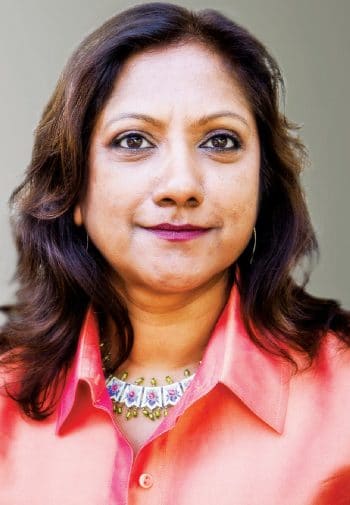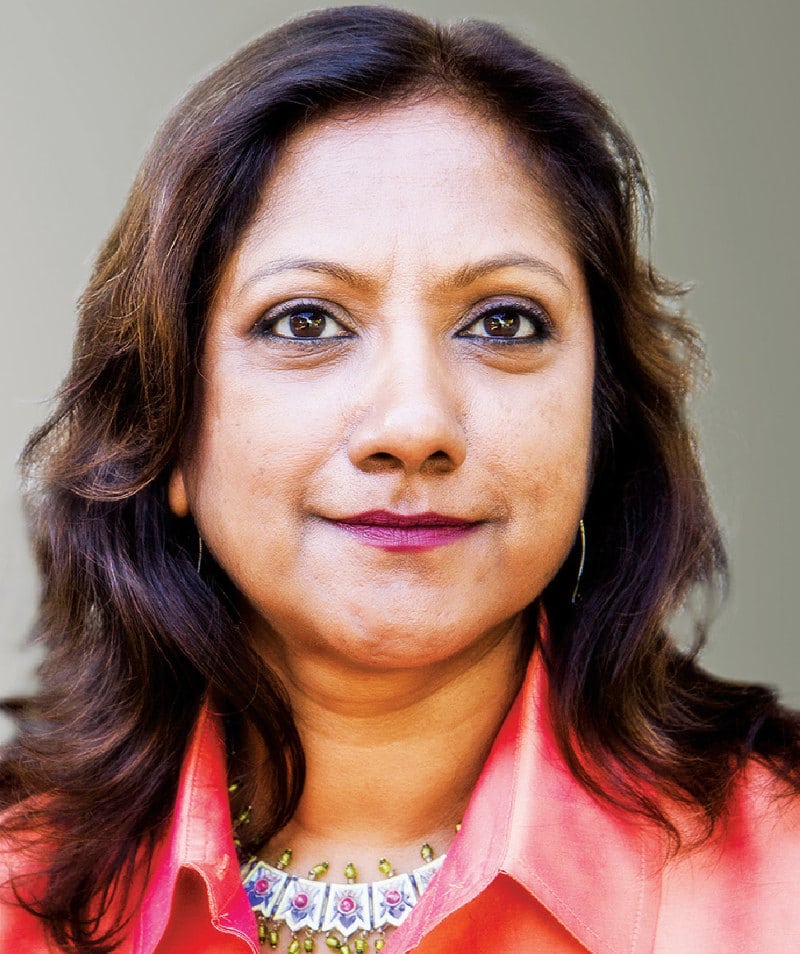 Open source is influencing the IT industry around the globe. Not just the software leaders but also the big hardware players of the industry are closely watching the growth of open source technologies. India is emerging as one of the top regions for open source, for many corporates as well as the community. Jagmeet Singh of OSFY interacted with Nithya Ruff, director, Western Digital Open Source Office, to understand where India is on the radar of the global IT giant. Ruff recently joined the Linux Foundation as an at-large director to bring additional focus on gender equality and diversity to the open source world among other things. Edited excerpts of this exclusive conversation…
Open source is influencing the IT industry around the globe. Not just the software leaders but also the big hardware players of the industry are closely watching the growth of open source technologies. India is emerging as one of the top regions for open source, for many corporates as well as the community. Jagmeet Singh of OSFY interacted with Nithya Ruff, director, Western Digital Open Source Office, to understand where India is on the radar of the global IT giant. Ruff recently joined the Linux Foundation as an at-large director to bring additional focus on gender equality and diversity to the open source world among other things. Edited excerpts of this exclusive conversation…
Q What were the prime challenges you faced while adopting open source at Western Digital?
A large number of companies moving to open source face the challenges of education, creating awareness and a compliance policy that strikes the right balance. We are no different, and have grown over the past three years to be an active contributor and visible supporter of open source in the community.
Q How are you planning to enable open source within Western Digital?
Open source, like standards, is considered an essential and strategic part of how we innovate at Western Digital. It is connected to our technology and business strategy as a company. Going forward, we plan to continue to consume and contribute to key projects, speak to and sponsor developers and be a part of projects and communities that we work in. We will also collaborate with other companies and projects to develop areas that are important to the industry and to us. Certainly, you will see us being more visible in our support for open source innovation.
Q Has it become vital for an IT solutions provider like Western Digital to choose the open source path, today?
Open source innovation is in every major area of our business, starting from handheld devices to mobiles and embedded storage, to the data centre and the cloud. We held an Investor Day in December 2016, and encouraged customers to view our latest strategies on our investor microsite.
Being a leading storage solutions provider, our customers often ask for some standards-based solutions. Open source has been creating standards and leading innovation for some time now. We recognise and leverage it in our product and technology plans. It is one aspect of an innovation plan.
Q Is it necessary to have strong community support for the success of an open source offering?
It is always good to have strong community support for an open source project. Companies like Western Digital work hard to build awareness and support for their open source offerings. Sometimes, a project may be small and niche — appealing to only a few people. In such cases, it needs to serve only that small group. But in all other cases, a project needs to have broad and strong support from the community, in order to succeed. Some of the metrics we look at are the number of downloads, users, developer contributions and issues reported and pending, as well as the level of engagement, to gauge if the support from the community is strong.
Q How can IT companies ensure active participation from various communities for their open source solutions?
Interaction between the community and company is critical. We need each other. One of the best ways to build community support is to make it easy for contributors and users to collaborate and contribute, and have their voices heard. Companies can communicate the project at meetups and events, and share the many ways people can contribute to, download the software, and be involved.
Also, companies and project leaders need to be responsive to issues and messages in order to create an inclusive community. Having an open and transparent way to collaborate through a good governance model is indeed the key.
Q Where do you see India in terms of open source contributions?
I have not tracked contributions from India closely, but have observed a growing interest and presence from many Indian companies and developers in open source projects that I am a part of.
India has become a great supporter of open source. From students working as interns to developers in multinational and Indian companies, a large part of the country is leveraging open source. The government also has a more open policy regarding the use of open source.
Q Do global IT concerns like Western Digital and SanDisk look at hiring developers from India?
Yes, absolutely. The industry needs smart and talented people. We have an office in India, and have many qualified and talented developers that work for us there and even in the US.
Q What qualities do you as an open source head look for in open source developers?
A track record of working and contributing to open source is vital when choosing the right talent. Also, the ability to work with the community and understand the norms of contributing, the variety of licences, the quality of work when involved collaboratively with others in a distributed and remote project—these are some of the key points to consider.
Most important is a passion for doing open source work, which involves a different way of developing. It is important to understand this in order to be effective in a community-run project.
Q Do you think there is a huge gender gap in the tech sphere across the globe?
Yes, unfortunately, there is a gender gap. There are many factors contributing to this. In my opinion, the factors include support at home to learn tech, media images of who is in tech, how school classes are structured, and finally, the culture of the tech world. All of these reinforce some gender stereotypes that tech is male dominated and suited only for men.
However, women nowadays are moving into a new and more visible role, and I encourage that. When I talk to successful women in the tech industry, they have some things in common — a very supportive home with a parent or spouse who is in tech or encouraged them to get into tech. Early exposure to tech in gaming or other technical areas is also key. A teacher or champion who supported them in engineering school and helped them stay in engineering can also be advantageous. It also takes persistence and strength for a woman to be in tech today. I have done it—and so can other women. Based in Silicon Valley, I see many successful women; so I encourage all of them to take the challenge.
Q How can we build a women-friendly environment in the technology world?
The environment needs to change to include more women and newcomers into tech. There is definitely more awareness today, and things are slowly changing. But some things still need to change.
What we need are mentors and the exposure to tech careers and skills for girls, right at the school level. Many companies are doing this, and we need more working professionals who spend time in schools, sharing and educating girls and boys on a career in tech and about the skills needed. Similarly, teachers who know how to teach coding and computer science in schools need to engage with girl students. Schools like Harvey Mudd, which create and craft curriculum to welcome women into tech and make the on-ramp into tech easier, also need to be encouraged for further initiatives.
To bring women into engineering, tech companies also need to make certain cultural changes in their recruiting, retention and development processes. Often, activities and culture are geared around men who have been the dominant group. From work hours to informal socialisation to how communication happens, companies should examine how this needs to change to make it easier for women to join and stay. Further, managers need to be trained to be inclusive and demonstrate as leaders how to include and support all the people in their teams. Lastly, CEOs and leaders of companies need to make this a business imperative and ensure that all levels of the organisation believe and support inclusion. I am proud to say that Western Digital does all this.
Q Do you have any plans to leverage your leadership at the Linux Foundation to enable greater participation of women in the growth of open source?
Yes, this is one of my key focus areas at the Linux Foundation—to advise, advocate and support programming around welcoming more women and minorities into open source.
Q How is the Linux Foundation making open source developments easy for developers and solutions providers?
The Linux Foundation’s biggest impact is to create training, events and education around how to work with open source for developers and companies. It also houses and funds critical projects in the industry and provides tools, best practices and education around open source compliance. All of this makes it easier for developers to create projects that are valuable.
Q What are the advantages of joining the Linux Foundation for companies like Western Digital?
The Linux Foundation has become a central place for collaborative development in the industry, and companies that do work with open source have benefited by becoming members. This non-profit organisation helps companies like Western Digital become strategic and skilled at consuming, contributing, collaborating and becoming compliant in open source. This is a key external engagement that all companies need to learn to manage as they become disrupted by digitisation and open source.
Q On a concluding note, how do you see open source evolving in the next five years?
As more industries and products are touched by open source, we will see a lot of new people and industries enter the community. We need to make it welcoming and easy to get involved.
There will be a need for collaboration across open source projects, so that individual projects do not work as islands.
Open source tools will become easier to use and will be taught in schools. Best practices and consistent practice of how to manage open source development will reduce fears and uncertainty about open source across the industry. Moreover, open source methods inside companies will be increasingly used as the way forward to develop software.
Ruff has just left Western Digital and joined Comcast as a senior director of its Open Source Practice division.
















































































